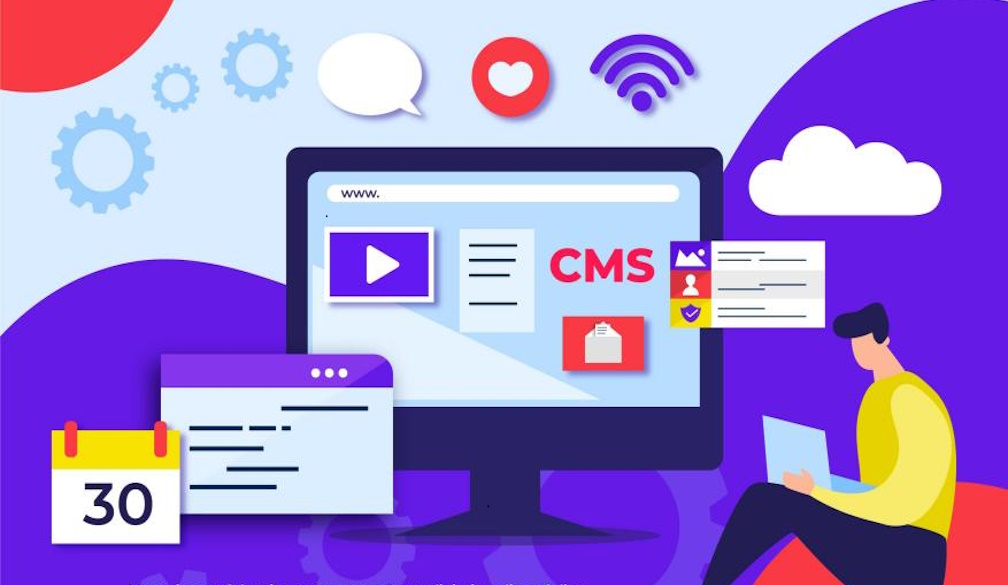How Headless CMS Enhances Responsive Design and Layout Flexibility

Image by freepik
As digital technology continues to evolve at a breakneck pace, users expect much more from content than ever before, and responsive design is crucial to ensure content not only looks but operates across all screens. No longer are people easily entertained by content that doesn't translate or render properly on mobile, tablets, and laptops. Therefore, the implementation of responsive design is paramount. Yet, many legacy content management systems box designers into such stringent inflexibility and responsiveness because of the predetermined architecture. Yet with a Headless CMS, developers and designers are afforded the access and flexibility to such an extent that they can achieve successful responsive design results without even trying.
What is a Headless CMS?
A headless CMS is essentially when content management and storage are separate from content being delivered to the front end. A typical CMS would tie the content to the design and presentation options, but a headless CMS allows the content to be sent via APIs to any front end application. Next preview functionality further enhances this flexibility by enabling developers and content editors to see real-time previews of unpublished content changes in Next.js-powered environments. Thus, designers and developers can create responsive, fluid interfaces without worrying about the content management software's backend restrictions, providing a wide range of options and capabilities for mobile applications, websites, and even kiosk displays.
Improved Layout Flexibility Due to Decoupled Structure
Layout flexibility is exponentially increased because it's impossible to tell what's going on under the hood. Any front end framework or technology is allowed from React to Vue to Angular, even Svelte and teams don't have to worry about what the backend can and cannot handle. Thus, there's more room for exploration to create entirely new layouts that, from the onset, react to different devices and screen sizes. Instead of applying a layer of management over the backend restrictions, now, everything is on the table to be investigated and presented.
Faster Implementation of Responsive Designs
Responsive designs require extensive testing, plus rapid adjustments while trying to create a new layout. With a headless CMS, a front end team is empowered to test its vision without having to continually interface with backend developers. Since everything goes through the API, rapid adjustments are available to reposition and resize content in real time. Furthermore, general updates are more accessible since there is no waiting for approval. This significantly reduces time to market for any design.
Increased Content Reusability Across Screens and Simpler Responsive Design
A headless CMS supports content reuse across different layouts and screen sizes more easily, which simplifies a team's efforts for responsive design. Because content lives in singular, editable blocks, it's simple for designers to piece together, shift, and relocate content blocks for the device type or screen size required. This modular approach to content management offers messaging consistency while empowering teams to easily adjust and shift design on a whim to deliver a cohesive yet adjusted experience.
Improved Mobile Performance
Responsive design incorporates mobile engagement into performance metrics. The structure of a headless CMS improves performance naturally as it delivers fewer and lighter content packages to mobile devices. Through APIs, developers can determine what needs to be delivered, how much whitespace is generated, and how to create faster load times. All of this culminates in a quicker, easier, more engaging experience on mobile, which translates into better retention, engagement, and satisfaction.
Responsive Design Functionality with Impactful Real-Time Personalization
Headless CMS facilitates relevant integrations with real-time data and analytics that support immediate personalization in responsive design. APIs that push content can also instantly shift based on past or current user interaction as well as device type, geo-location, or preference. Real-time personalization creates engaging and relevant experiences that span screens and facilitate better engagement and improved conversion.
Content Can Be Responsively Rendered Regardless of All Channels
Web, mobile, AR/VR, IoT enterprise and even unknown channels can be facilitated by headless. Whether future technology comes to life or digital assets generated today yet without a home are deployed, AR/VR headless CMS can supply the content across channels as if they were all first-party and just as responsive. Since APIs push the same content to different endpoints, ensuring accurate presentation and form, engaging developers can render and create responsive experiences on a per-channel basis, understanding that their content structure remains the same across all API executions.
Less Technical Debt to Complicate Efforts
Traditional CMS options can hinder responsive design as well due to the technical debt accrued over time but increasingly gained as new integrations from the backend or frontend come into play. With headless CMS, much of this technical debt is eased, too, for concerns are separated and not cross-contaminated. Frontend developers no longer worry about unauthorized libraries or backend issues from last year's site. Everything is an easier lift with responsive design able to be accomplished in less time and for less cost over time, easing technical debt and providing peace of mind for future iterations.
Team Alignment on Visual and Structural Improvements
Responsiveness requires a collaborative team effort between designers and developers. A split architecture allows the collaboration but maintains an expected focus on their expertise simultaneously. Designers can create rapid responsive prototypes while developers can work solely on the content API integration. Headless separates the concerns enough to better define roles, improving communication and workflow for the effort to keep everything on schedule faster.
Easier Globalization and Language-Based Responsiveness
Adding multilingual responsiveness can be complicated when trying to have different language-based responsive designs at the same time. Yet, with a headless CMS, localization is easier for teams to manage, and designers and content teams can more quickly respond to different responsive needs and layouts of content to attract audiences worldwide. They can better structure and translate content, optimizing for different dialects and regions and ensuring that everyone has access to culturally relevant, visually appealing, and appropriately responsive websites at an international level, opening up more opportunities for global engagement.
API Allows for Specific Layout Details.
Headless CMS is an API-based architecture that permits specific adjustments for layout details or where content can go. Because the API routes the content regardless of how it's displayed on the front end, it provides designers and developers exactly what they need to adjust where they want it to go and how. Thus, if more specific layout levels are granted, the more adjustments can be made for responsiveness. Specific layout levels ensure that all users can access information regardless of device usage, which promotes better usability and more considerate, attention-grabbing responsive designs.
Responsiveness is Future-Proofed.
Responsiveness is future-proofed already just from the ease of access that the headless CMS architecture provides. Whenever a company decides to use a new front-end technology or different devices, the capabilities can be adopted without needing an overhaul down the line. This means that responsive layouts can exist somewhat naturally and rapidly adapt to new user needs and device preferences, providing a competitive edge and digital longevity with effective responsive layouts that work when they should from the get-go.
Responsive Design is Easy with Content Structure as Components
With a headless CMS, content sets can act as components. This means that instead of static content and needing to hard code different versions for different applications, designers and developers can create content in segments, interchangeable for responsive design needs, and fill in different templates without hassle. This makes design and development much more seamless, consistent, and uniform across the board for reliable presentation methods that are responsive and attractive for quality content every single time, every single place.
Better Responsive Accessibility
Accessibility is a huge factor in reaching broader markets, as many users still operate with disabilities. Headless designs allow for better accessibility initiatives for responsive designs to comply with various standards like WCAG and Section 508 Compliance. Because the presentation layer and content aren't locked together, designers and developers can pay closer attention to how they want the content to display via numerical and ranked ordering to ensure everything is dynamically accessible, no matter screen size and device, creating positive experiences for those who require assistive technology.
Responsive Layouts Can Learn From Analytics Adjustments Over Time
Metrics and analytics collection can be bonded with headless CMS platforms. When a layout is responsive but needs improvements, graphic designers and developers can tap into the integration to better understand what's not working. Whether high bounce rates or low CTA selections, these metrics help designers realize pain points and performance problems associated with responsibility so that they can edit it quickly for a better user experience. A responsive UI can learn from the integration of analytics adjustments by changing on a whim as user engagement dictates its success.
Improving User Journeys Across Devices
Users are always switching devices on their journey to access an application, so cohesive experiences are critical. A headless CMS encourages a better cross-device journey since everything is in one location concerning content and communication. In addition, the UI/UX designer can create a responsive design catering to seamless interactions across screens. Therefore, users will have clear, cohesive journeys when transferring from desktop to mobile and any other digital experience, increasing retention and satisfaction.
Conclusion
Headless CMS adoption fosters responsive design capabilities as the unprecedented flexibility, speed, and effectiveness allow organizations to generate exciting digital encounters across devices and platforms whenever users are active. Unlike traditional CMS solutions that force companies to adhere to any number of streamlining solutions, decoupled technologies allow companies to manage the back-end content entirely disconnected from the front-end delivery. Thus, designers and developers can independently choose whatever solutions and technologies suit them best for the front end.
Be it React, Angular, Vue, or even static site generators, headless CMS facilitates independence of design choice. In addition, it also makes for more efficient content management in the development of front-end and back-end tasks. Developers and designers are not waiting for each other to finish particular tasks, as the project segmentation allows a project to move independently on both ends. As such, headless technologies provide application programming interfaces (APIs) that quickly render associated content from better-designed content than badly designed content more suitable for a specific device.
Such flexibility increases the capacity for innovation. Organizations can experiment with new concepts at breakneck speed without fear of back-end inconsistencies getting in the way of front-end delivery. Trends, flexible designs, and custom experiences can be made and tested far more quickly than more traditional frameworks allow. Integrated analytics and user data support real-time content tailoring, ensuring that what is encountered is essential to that individual on that device. Increased tailoring generates increased engagement and happiness.
Finally, beyond increased efficacy via speed and flexibility, headless adoption enhances efficiency by reducing unwanted content management. Content becomes more modular, allowing the same multimedia to render across different responsive interactions without redundancy. This reduction in volume increases complexity, minimizes technical debt, and limits maintenance efforts while empowering more time to be devoted to better experience-generating efforts.
Ultimately, the best responsive design solutions come from using headless CMS to facilitate quicker load times through decreased assets and images, more engaging interactions such as buttons and links, and personalized experiences that keep people engaged for whatever purpose they've been presented with. The more satisfied employees are using headless CMS to fulfill responsive design needs, the more likely they will come back repeatedly, giving organizations the opportunity to foster persistent competitive advantage from such future-ready responsive design generation solutions.














